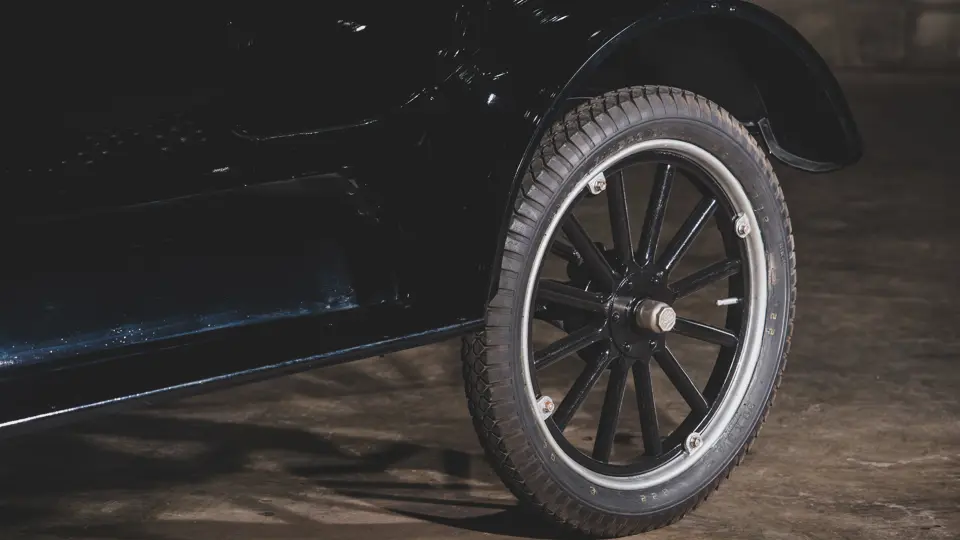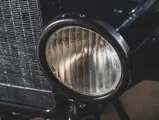The Model T Ford was built in a myriad of body styles over the two decades of its existence, but by far the most popular was the five-passenger Touring car. Most of these were of the ‘three-door’ configuration introduced for 1913. Bodies were all new that year. Doors were permanently mounted, but there were just three of them, the driver’s door being a “dummy” with a faux outline in the outer sheet metal. This was to eliminate an otherwise clumsy entry and exit for the driver, since the left-side handbrake got in the way. For 1914, the body was slightly revised, to add strength and rigidity, and the door openings were made shallower to accommodate the additional bracing. Fully 80 percent of Model Ts were Tourings.
Subsequent changes included electric lights, supplied by the magneto, for 1915 and the abandonment of brass trim for the “black T” motif in 1917. A battery, electric starter, and generator were added to closed cars for 1919. Later in the year, open cars also received a starter. Wheels were now demountable.
This car, an older quality restoration, has the hallmarks of an early 1919 tourer, with electric lights and demountable rims, but no battery, generator, or starter. It has been titled as 1918, however, using an engine number that was possibly state assigned. It was acquired in June 1985 from Victor Labantschnig of St. Louis, who is believed to have restored it. The top is a LeBaron Bonney item, and the upholstery is done to factory specification in buttoned black artificial leather. The floors have the difficult-to-find rubber mats. The tires are 30 × 3½ Wards Riverside, of considerable age.
The archetypal Model T, this black touring car will provide pleasure, whether on tour, on the show field, or simply being driven for old-fashioned enjoyment.




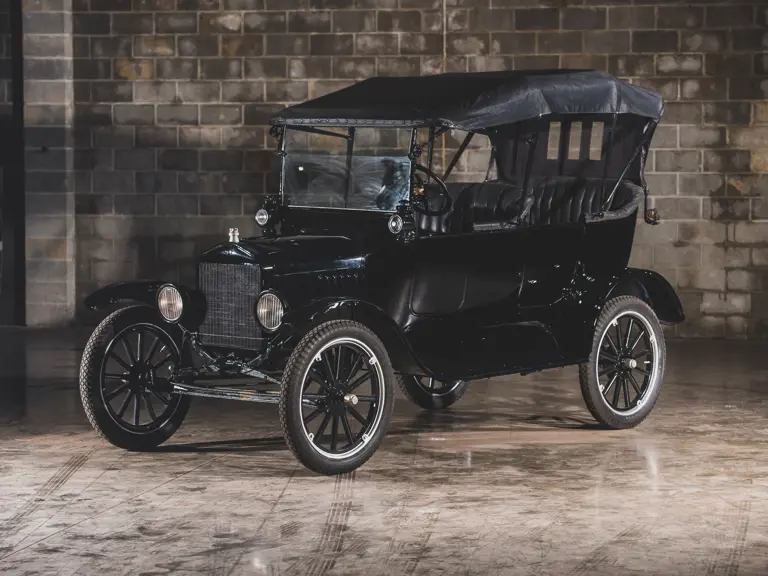
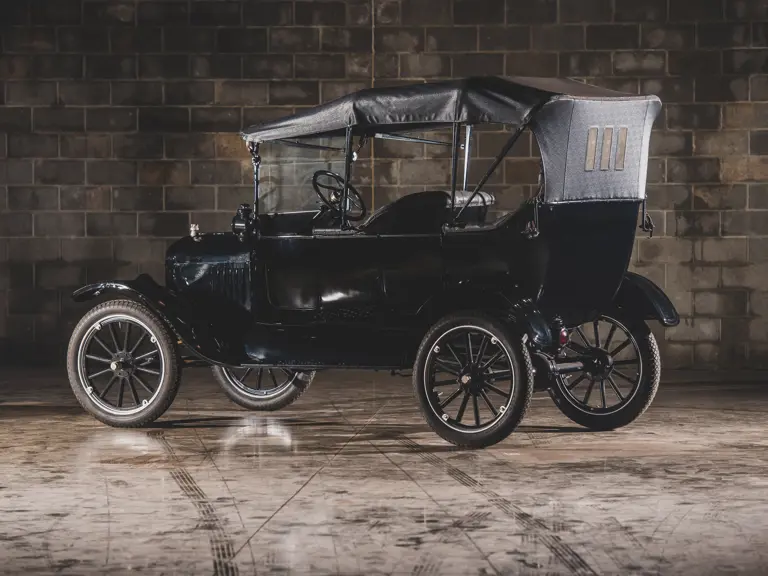


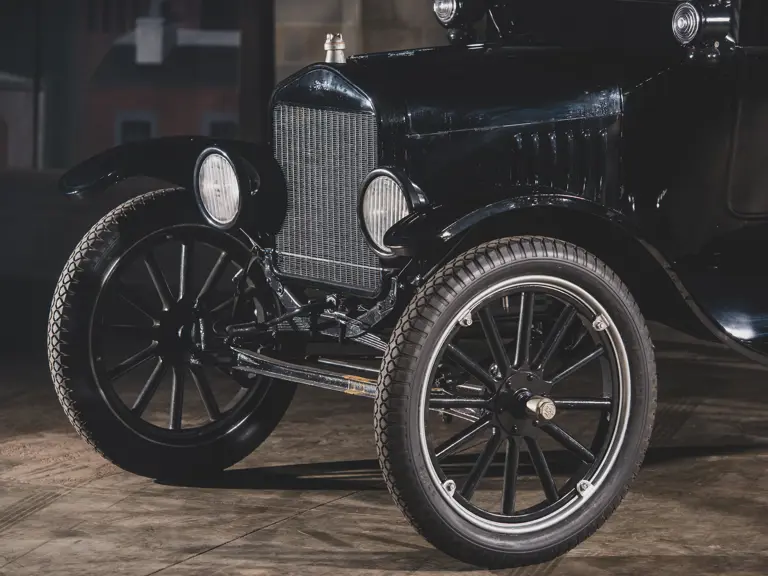



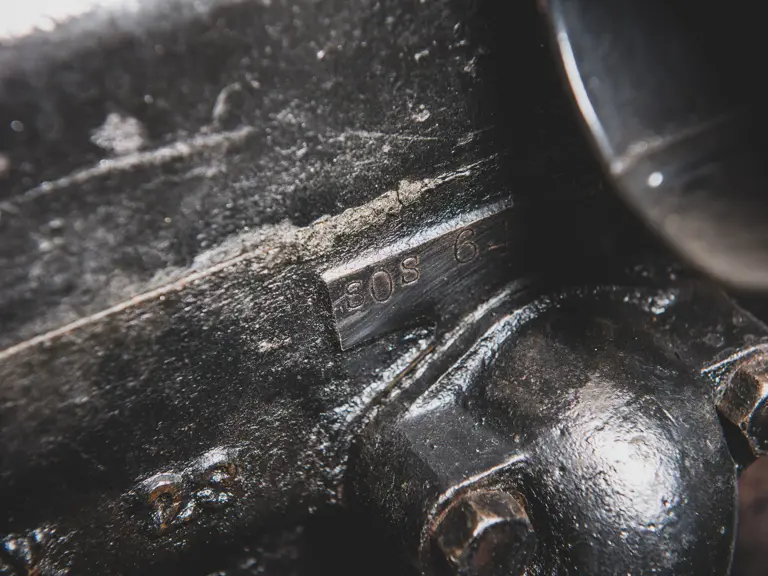
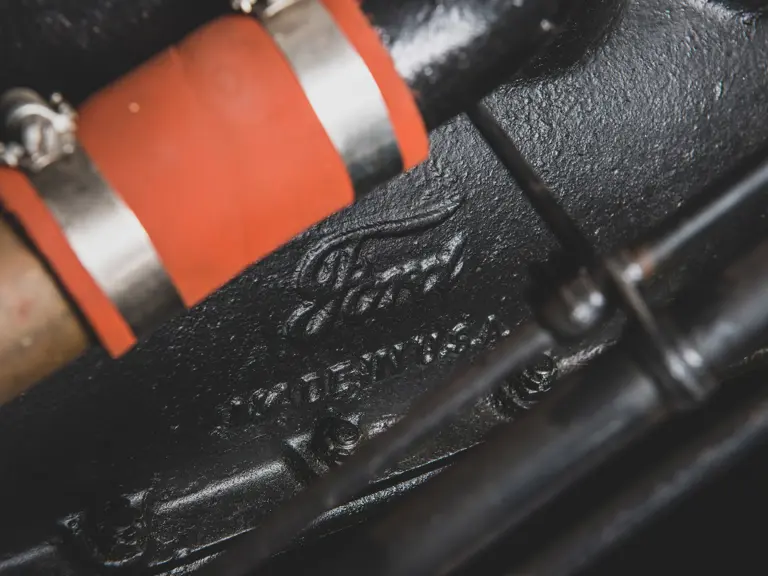


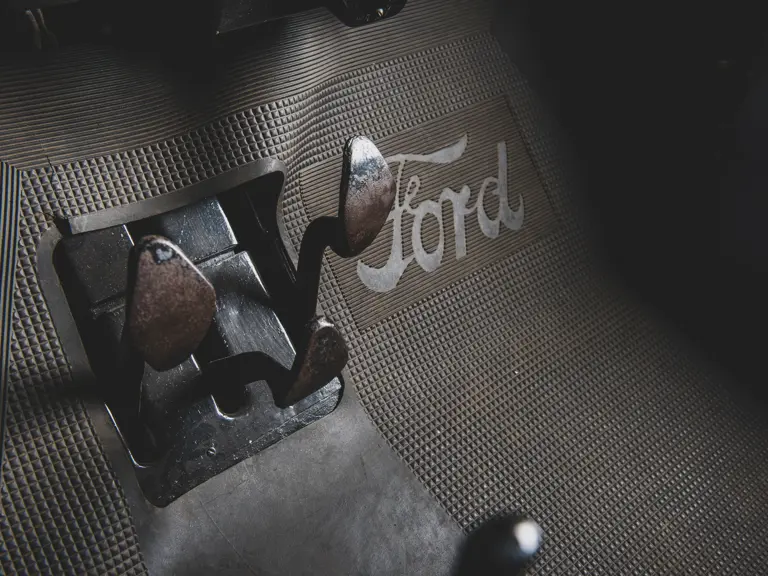

 | St. Louis, Missouri
| St. Louis, Missouri

